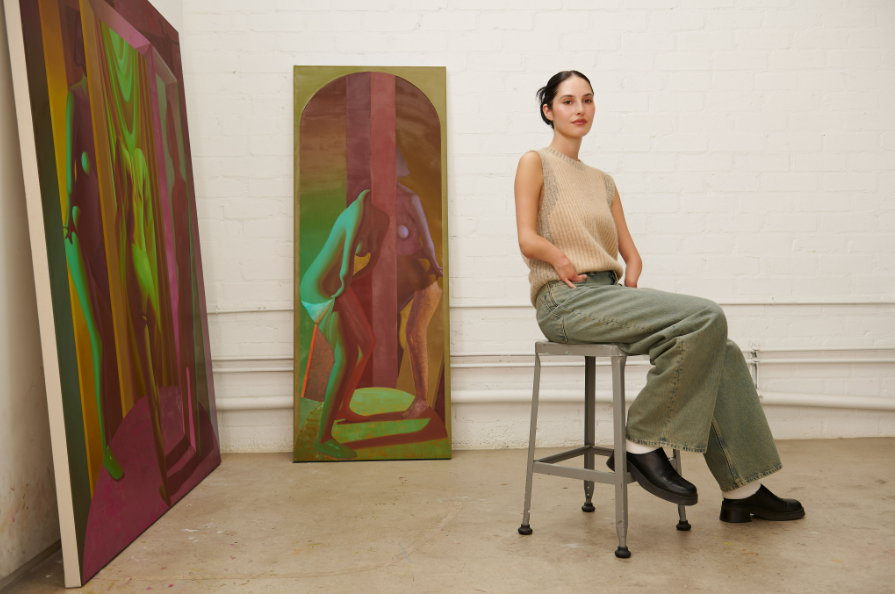
AGE: 29
BASED: Los Angeles
For Kate Meissner, painting is about mind games.
On the artist’s canvases, women (or fragments of them) are positioned within claustrophobic structures, hunching or contorting themselves to fit. Highly saturated and theatrically lit, her scenes are realms where the commercial and corporeal intersect—calling to mind peep show stages, for example, or storefront windows filled with mannequins. The artist, who often uses her own body as the basis for her figures, is drawn to “any place where the body is on display”—where it is “examined or probed.”
They’re on display, yes—but Meissner’s femme figures remain elusive. Their faces are never visible, and “there’s a lot of slippage between what is flesh and what appears to be plastic,” the artist muses. In the past, Meissner based her tableaux on small dioramas—miniature architectural spaces that she constructed and filled with small handmade figurines. For “Tableaux Rosa,” a duo exhibition with Regina Parra at Lyles & King earlier this year, Meissner dreamed bigger. “I made a human-sized version,” she explains. “I built out a four-by-eight-foot plexiglass box with hanging curtains and all these different latex materials.” The artist staged photographs of herself within the confines of this seedy theater, her body partially obscured by the curtains (a recurring motif for the artist, which she describes as a “divider between reality and fantasy”).
Meissner, who has lived in Los Angeles since completing her MFA at Yale in 2021, draws heavily from the visual lexicon of film. The psychological unease and surrealism evoked by directors like David Cronenberg, David Lynch, and Todd Haynes are sources of inspiration when it comes to making work that conjures a creeping sense of unease. “I’m looking for this moment of anxiety when the familiar suddenly appears strange. How can that be manifested in the construction of the body?”
In addition to Lyles & King, Meissner has shown previously at New York’s 1969 Gallery, and in January will open her first institutional exhibition—the largest showing of her paintings to date—with Abroms-Engel Institute for the Visual Arts in Birmingham, Alabama. What message does she want visitors to come away with? “I want there to be an openness [in my work], an ambiguity where you’re not quite sure if something is living or fake—the combination of anxiety and curiosity that creates."










 in your life?
in your life?

